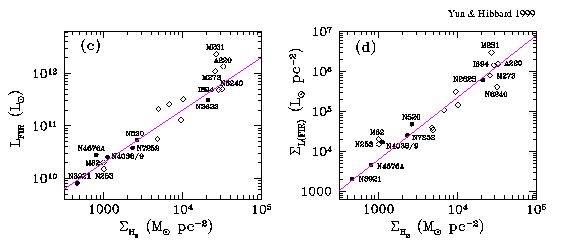
We examine high-resolution CO data of both IR and optically selected
mergers in order to address if there are any fundamental
differences between them. The optically selected mergers fall on the same
relationship between the mean gas density and FIR luminosity defined
by the IR luminous mergers, extending it to lower luminosity and lower
mean gas density. This is similar to the ``global Schmidt law" of
Kennicutt, and all merger systems appear to follow the same star
formation ``law" as the field galaxies. If AGN fueling is largely
decoupled from the gas distribution on kpc scales, then deviations
from this relationship may constrain the contribution of AGN to the
FIR luminosity. The response of the gas during the merger process is
quantified by comparing the specific angular momentum, J/M, of the
merger systems to normal spiral disks. We find that the molecular gas
disks of the merger systems have ~5 times less J/M than field spirals
with the same gas mass. There is little difference between the
optically selected mergers and IR selected mergers suggesting that
angular momentum shedding by molecular gas is a universal process
among all major merger systems. Lastly, an examination of the radial
gas density profiles suggests that some of the less luminous mergers
such as NGC7252 may have had a dense central molecular core in the
past, which has since been eroded by starburst activity.
Back to home
Maintained by
jhibbard
@ nrao.edu